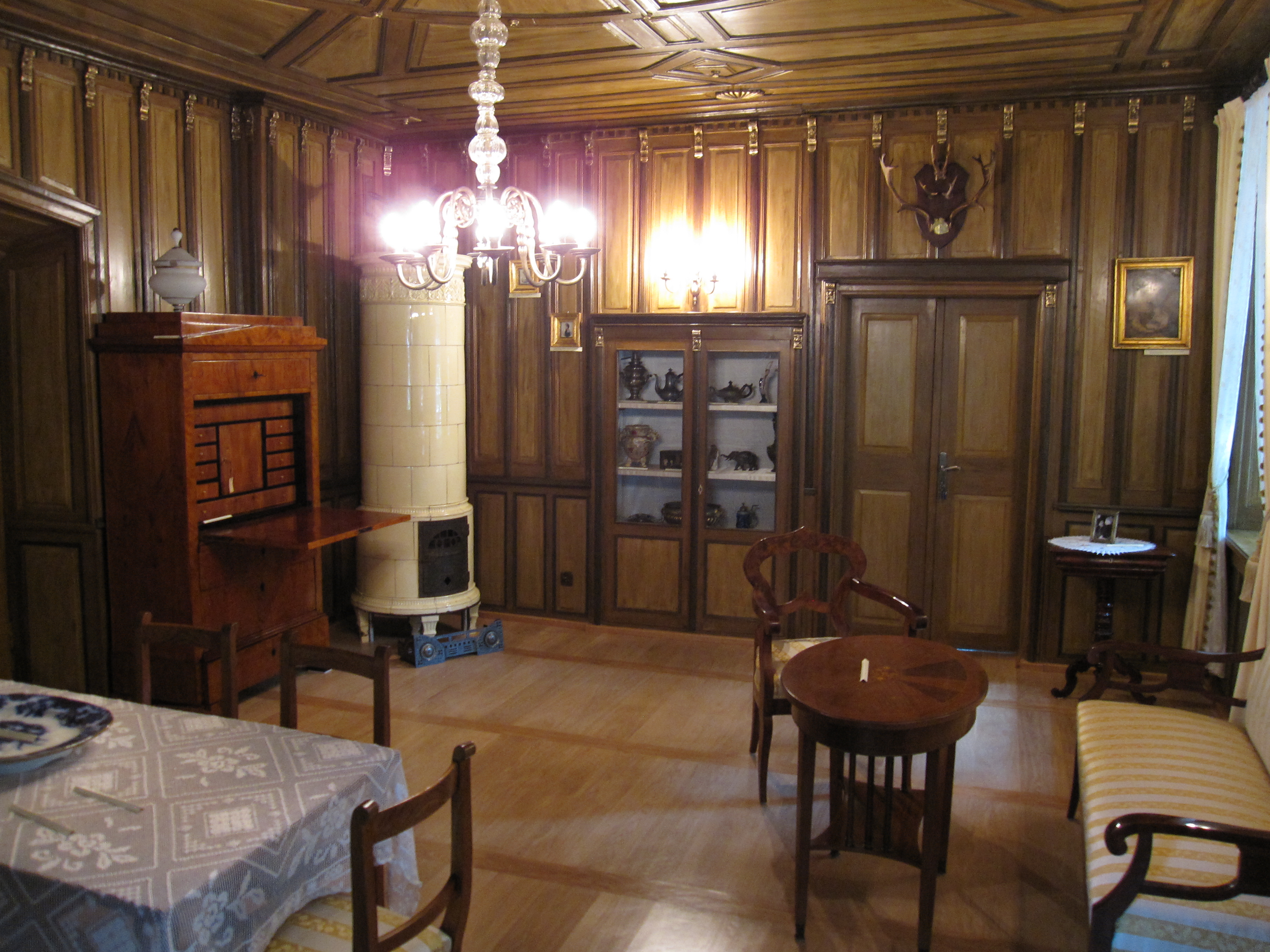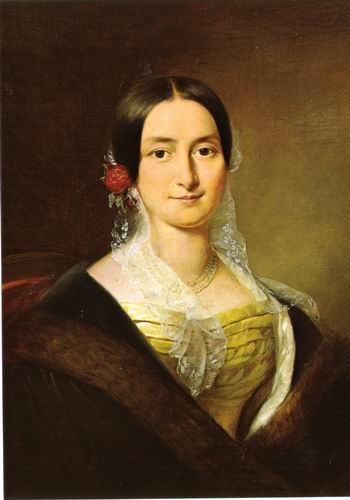|
Franz Sartori
Franz Sartori (7 March 1782 – 31 March 1832) was an Austrian writer. Primarily writing on the subjects of topography and geography, he was one of the most prolific writers of Biedermeier Vienna. Biography Sartori was born on 7 March 1782 in Unzmarkt in Styria, a region of Austria. His father was a servant of Karl Philipp, Prince of Schwarzenberg. He studied philosophy at the University of Graz. Sartori's earliest articles were written for a magazine published by Karl Andree in Brno. His first profession was as an accounting clerk in Graz in 1802. His preference for solitude and study led him to join the Minorite Order in Graz, and he was for a time a preacher in the parish church of Mariahilf, but his acquaintance, the naturalist and geographer Josef August Schultes, convinced him to leave the order in 1804 and take up writing as his profession. After leaving the order he edited the periodical ''Allgemeines Zeitungsblatt für Innerösterreich'', to which he also contributed scien ... [...More Info...] [...Related Items...] OR: [Wikipedia] [Google] [Baidu] |
Biedermeier
The Biedermeier period was an era in Central European art and culture between 1815 and 1848 during which the middle classes grew in number and artists began producing works appealing to their sensibilities. The period began with the end of the Napoleonic Wars in 1815 and ended with the onset of the Revolutions of 1848. The term originated in popular literature, before spreading to architecture, interior design, and visual arts. "Biedermeier" derives from the fictional mediocre poet Gottlieb Biedermaier, who featured in the Munich magazine ''Fliegende Blätter'' (''Flying Leaves''). It is used mostly to denote the unchallenging artistic styles that flourished in the fields of literature, music, the visual arts and interior design. As is natural in cultural creative movements, ''Biedermeier'' has influenced later styles. Political background The ''Biedermeier'' period does not refer to the era as a whole, but to a particular mood and set of trends that grew out of the unique ... [...More Info...] [...Related Items...] OR: [Wikipedia] [Google] [Baidu] |
University Of Vienna
The University of Vienna (, ) is a public university, public research university in Vienna, Austria. Founded by Rudolf IV, Duke of Austria, Duke Rudolph IV in 1365, it is the oldest university in the German-speaking world and among the largest institutions of higher learning in Europe. The university is associated with 17 List of Nobel laureates, Nobel Prize winners and has been the home to many scholars of historical and academic importance. History Middle Ages to the Enlightenment The university was founded on March 12, 1365, by Rudolf IV, Duke of Austria, hence the name "Alma Mater Rudolphina". After the Charles University in Prague (1347) and Jagiellonian University in Kraków (1364), the University of Vienna is the third oldest university in Central Europe and the oldest university in the contemporary German-speaking world; it remains a question of definition as the Charles University in Prague was German-speaking when founded, too. However, Pope Urban V did not ratify th ... [...More Info...] [...Related Items...] OR: [Wikipedia] [Google] [Baidu] |
University Of Erlangen–Nuremberg Alumni
A university () is an institution of tertiary education and research which awards academic degrees in several academic disciplines. ''University'' is derived from the Latin phrase , which roughly means "community of teachers and scholars". Universities typically offer both undergraduate and postgraduate programs. The first universities in Europe were established by Catholic monks. The University of Bologna (), Italy, which was founded in 1088, is the first university in the sense of: *being a high degree-awarding institute. *using the word (which was coined at its foundation). *having independence from the ecclesiastic schools and issuing secular as well as non-secular degrees (with teaching conducted by both clergy and non-clergy): grammar, rhetoric, logic, theology, canon law and notarial law.Hunt Janin: "The university in medieval life, 1179–1499", McFarland, 2008, , p. 55f.de Ridder-Symoens, Hilde''A History of the University in Europe: Volume 1, Universities in the Midd ... [...More Info...] [...Related Items...] OR: [Wikipedia] [Google] [Baidu] |
People From Murtal District
The term "the people" refers to the public or common mass of people of a polity. As such it is a concept of human rights law, international law as well as constitutional law, particularly used for claims of popular sovereignty. In contrast, a people is any plurality of persons considered as a whole. Used in politics and law, the term "a people" refers to the collective or community of an ethnic group or nation. Concepts Legal Chapter One, Article One of the Charter of the United Nations states that "peoples" have the right to self-determination. Though the mere status as peoples and the right to self-determination, as for example in the case of Indigenous peoples (''peoples'', as in all groups of indigenous people, not merely all indigenous persons as in ''indigenous people''), does not automatically provide for independent sovereignty and therefore secession. Indeed, judge Ivor Jennings identified the inherent problems in the right of "peoples" to self-determination, as i ... [...More Info...] [...Related Items...] OR: [Wikipedia] [Google] [Baidu] |
Journalists From The Austrian Empire
A journalist is a person who gathers information in the form of text, audio or pictures, processes it into a newsworthy form and disseminates it to the public. This is called journalism. Roles Journalists can work in broadcast, print, advertising, or public relations personnel. Depending on the form of journalism, "journalist" may also describe various categories of people by the roles they play in the process. These include reporters, correspondents, citizen journalists, editors, editorial writers, columnists, and photojournalists. A reporter is a type of journalist who researches, writes and reports on information in order to present using sources. This may entail conducting interviews, information-gathering and/or writing articles. Reporters may split their time between working in a newsroom, from home or outside to witness events or interview people. Reporters may be assigned a specific beat (area of coverage). Matthew C. Nisbet, who has written on science communication ... [...More Info...] [...Related Items...] OR: [Wikipedia] [Google] [Baidu] |
19th-century Austrian Male Writers
The 19th century began on 1 January 1801 (represented by the Roman numerals MDCCCI), and ended on 31 December 1900 (MCM). It was the 9th century of the 2nd millennium. It was characterized by vast social upheaval. Slavery was abolished in much of Europe and the Americas. The First Industrial Revolution, though it began in the late 18th century, expanded beyond its British homeland for the first time during the 19th century, particularly remaking the economies and societies of the Low Countries, France, the Rhineland, Northern Italy, and the Northeastern United States. A few decades later, the Second Industrial Revolution led to ever more massive urbanization and much higher levels of productivity, profit, and prosperity, a pattern that continued into the 20th century. The Catholic Church, in response to the growing influence and power of modernism, secularism and materialism, formed the First Vatican Council in the late 19th century to deal with such problems and confirm cer ... [...More Info...] [...Related Items...] OR: [Wikipedia] [Google] [Baidu] |
1832 Deaths
Events January–March * January 6 – Abolitionist William Lloyd Garrison founds the New-England Anti-Slavery Society. * January 13 – The Christmas Rebellion of slaves is brought to an end in Jamaica, after the island's white planters organize militias and the British Army sends companies of the 84th regiment to enforce martial law. More than 300 of the slave rebels will be publicly hanged for their part in the destruction. * February 6 – The Swan River Colony is renamed Western Australia. * February 9 – The Florida Legislative Council grants a city charter for Jacksonville, Florida. * February 12 ** Ecuador annexes the Galápagos Islands. ** A cholera epidemic in London claims at least 3,000 lives; the contagion spreads to France and North America later this year. * February 28 – Charles Darwin and the crew of arrive at South America for the first time. * March 24 – In Hiram, Ohio, a group of men beat, tar and feather Mormon leader Joseph Smith. Apri ... [...More Info...] [...Related Items...] OR: [Wikipedia] [Google] [Baidu] |
1782 Births
Events January–March * January 7 – The first American commercial bank (Bank of North America) opens. * January 15 – Superintendent of Finance Robert Morris (financier), Robert Morris goes before the United States Congress to recommend establishment of a national mint (facility), mint and decimal coinage. * January 23 – The Laird of Johnstone (George Ludovic Houston) invites people to buy marked plots of land which, when built upon, form the planned town of Johnstone, Scotland, to provide employment for his Yarn, thread and cotton mills. * February 5 – The Spanish defeat British forces and Invasion of Minorca (1781), capture Menorca. * February 6 – Singu Min is overthrown as king of Myanmar by his cousin Phaungka Min and 8 days later will be executed by his uncle Bodawpayar. * February 18 – Fourth Anglo-Dutch War: Shirley's Gold Coast expedition lands at Elmina on the Dutch Gold Coast. The British expedition fails to take the for ... [...More Info...] [...Related Items...] OR: [Wikipedia] [Google] [Baidu] |
Archduke John Of Austria
Archduke John of Austria (, ; (or simply ''Nadvojvoda Janez''); 20 January 1782 – 11 May 1859), a member of the House of Habsburg-Lorraine, was an Austrian field marshal and imperial regent (''Reichsverweser'') of the short-lived German Empire during the Revolutions of 1848. Biography John was born in Florence, the thirteenth child of the Habsburg Grand Duke Leopold I of Tuscany (Archduke of Austria and later Emperor) and Maria Louisa of Spain. He was baptized with the name of John Baptist Joseph Fabian Sebastian, after the patron saint of the Tuscan capital. In 1790, Leopold succeeded his brother Joseph II as the Holy Roman Emperor and his family moved from the Grand Duchy of Tuscany to the Imperial court in Vienna. Only two years later, John's elder brother Francis II ascended the Imperial throne. John's native language was Italian, though he learned to speak French and German fluently. Educated by the Swiss historian Johannes von Müller, he developed wide-rangi ... [...More Info...] [...Related Items...] OR: [Wikipedia] [Google] [Baidu] |
Austrian Alps
The Central Eastern Alps (), also referred to as Austrian Central Alps () or just Central Alps, comprise the Main chain of the Alps, main chain of the Eastern Alps in Austria and the adjacent regions of Switzerland, Liechtenstein, Italy and Slovenia. South of them is the Southern Limestone Alps. The term "Central Alps" is very common in the Geography of Austria as one of the seven major landscape regions of the country. "Central Eastern Alps" is usually used in connection with the Alpine Club classification of the Eastern Alps (''Alpenvereinseinteilung'', AVE). The Central Alps form the eastern part of the main chain of the Alps, Alpine divide, its central chain of mountains, as well as those ranges that extend or accompany it to the north and south. The highest mountain in the Austrian Central Alps is Grossglockner at . Location The Central Alps have the highest peaks of the Eastern Alps, and are located between the Northern Limestone Alps and the Southern Limestone Alps, fr ... [...More Info...] [...Related Items...] OR: [Wikipedia] [Google] [Baidu] |
University Of Erlangen
A university () is an institution of tertiary education and research which awards academic degrees in several academic disciplines. ''University'' is derived from the Latin phrase , which roughly means "community of teachers and scholars". Universities typically offer both undergraduate and postgraduate programs. The first universities in Europe were established by Catholic monks. The University of Bologna (), Italy, which was founded in 1088, is the first university in the sense of: *being a high degree-awarding institute. *using the word (which was coined at its foundation). *having independence from the ecclesiastic schools and issuing secular as well as non-secular degrees (with teaching conducted by both clergy and non-clergy): grammar, rhetoric, logic, theology, canon law and notarial law.Hunt Janin: "The university in medieval life, 1179–1499", McFarland, 2008, , p. 55f.de Ridder-Symoens, Hilde''A History of the University in Europe: Volume 1, Universities in the Midd ... [...More Info...] [...Related Items...] OR: [Wikipedia] [Google] [Baidu] |
Biographisches Lexikon Des Kaiserthums Oesterreich
''Biographisches Lexikon des Kaiserthums Oesterreich'' (English, ''Biographical Encyclopedia of the Austrian Empire'') (abbreviated ''Wurzbach'' from the author's surname) is a 60-volume work, edited and published by Constantin von Wurzbach, containing about 24,254 critical biographies of notable personages in every walk of life and from all parts of the Austro-Hungarian monarchy who were born, lived or worked there during the period 1750–1850. See also * ''Österreichisches Biographisches Lexikon 1815–1950'' (ÖBL) References External links *ws Text at German-language Wikisource *alo Biographisches Lexikon des Kaiserthums Oesterreichat Austrian Literature Online **ws Volume 1 (1856): A – Blumenthal ** [...More Info...] [...Related Items...] OR: [Wikipedia] [Google] [Baidu] |








